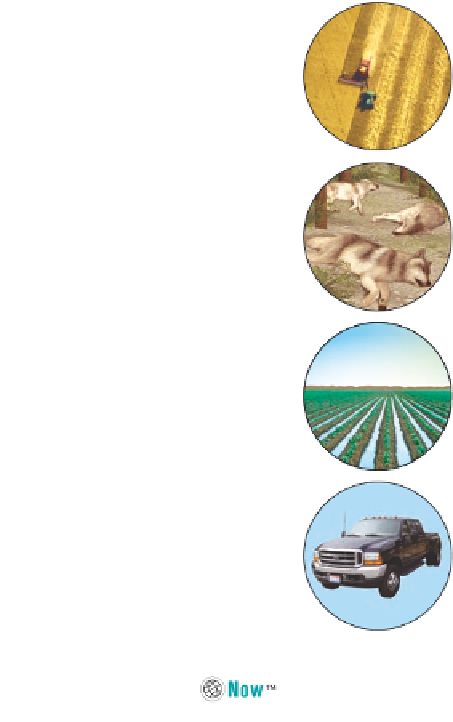Environmental Engineering Reference
In-Depth Information
ing, homogenizing, and degrading nature for our pur-
poses. Otherwise, what is at risk is not the resilient
earth but rather the quality of life for our own species
and the existence of other species we drive to prema-
ture extinction. We cannot save the earth; it can get
along very nicely without us, just as it has done for
3.7 billion years. However, by learning how the earth
works and by working with its natural processes, we
can sustain the quality of life for the human species
and avoid the projected premature extinction of as
many as half of the world's species during this century
as a result of the eight factors just discussed.
Natural Capital Degradation
Altering Nature to Meet Our Needs
Reduction of biodiversity
Increasing use of the earth's
net primary productivity
Increasing genetic resistance
of pest species and disease-
causing bacteria
Elimination of many natural
predators
Ecological Surprises
Deliberate or accidental
introduction of potentially
harmful species into
communities
Malaria once infected nine out
of ten people in North Borneo,
now known as Sabah. In 1955,
the World Health Organization
(WHO) began spraying the island
with dieldrin (a DDT relative) to
kill malaria-carrying mosquitoes. The program was
so successful that the dreaded disease was nearly
eliminated.
Then unexpected things began to happen. The
dieldrin also killed other insects, including flies
and cockroaches living in houses. The islanders ap-
plauded. Next, small insect-eating lizards that also
lived in the houses died after gorging themselves
on dieldrin-contaminated insects.
Cats began dying after feeding on the lizards. In
the absence of cats, rats flourished and overran the
villages. When the people became threatened by
sylvatic plague carried by rat fleas, the WHO para-
chuted healthy cats onto the island to help control
the rats. Operation Cat Drop worked.
But then the villagers' roofs began to fall in. The
dieldrin had killed wasps and other insects that fed
on a type of caterpillar that either avoided or was
not affected by the insecticide. With most of its
predators eliminated, the caterpillar population ex-
ploded, munching its way through its favorite
food: the leaves used in thatched roofs.
Ultimately, this episode ended happily: Both
malaria and the unexpected effects of the spraying
program were brought under control. Nevertheless,
this chain of unintended and unforeseen events em-
phasizes the unpredictability of interfering with a
community. It reminds us that when we intervene in
nature, we need to ask, “Now what will happen?”
Using some renewable
resources faster than they can
be replenished
CONNECTIONS
Interfering with the earth's
chemical cycling and energy
flow processes
Relying mostly on polluting
fossil fuels
Active Figure 6-17
Natural capital degradation:
major ways
humans have altered the rest of nature to meet our growing
population, needs, and wants.
See an animation based on this
figure and take a short quiz on the concept.
the greenhouse gas carbon dioxide to the atmosphere,
and waste a great deal of energy.
To survive, we must exploit and modify parts of
nature. However, we are beginning to understand that
any human intrusion into nature has multiple effects,
most of them unintended and unpredictable (see Con-
nections, at right).
Examine how resources have been depleted or degraded
around the world at Environmental ScienceNow.
Critical Thinking
We face two major challenges.
First,
we need to
maintain a balance between simplified, human-altered
communities and the more complex natural communi-
ties on which we and other species depend.
Second,
we
need to slow down the rates at which we are simplify-
Do you believe the beneficial effects of spraying
pesticides on Sabah outweighed the resulting un-
expected and harmful effects? Explain.















